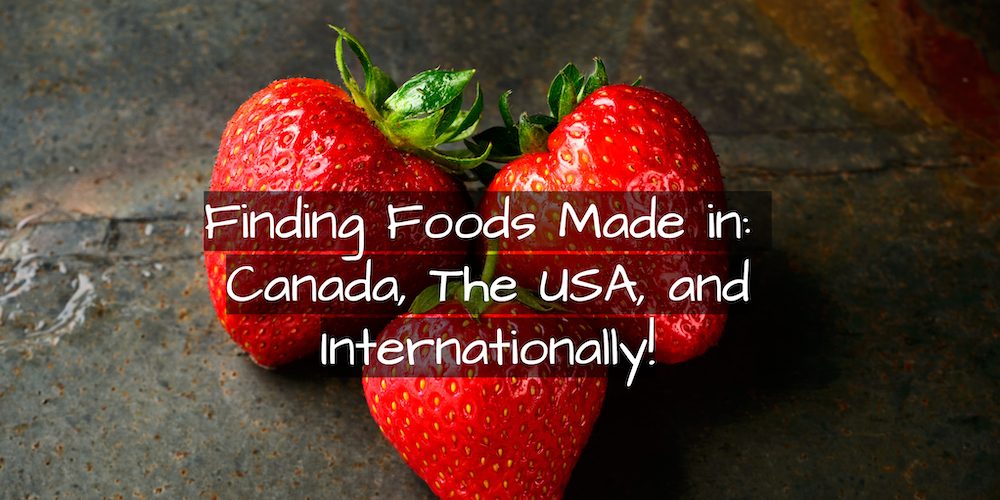“I want to know where my food is made,” is a common food question right now.
Why? Possibly because of the pandemic, along with other global issues seem to be playing a big part in a person’s need for more food information currently. For instance, just a few weeks ago I watched Justin Trudeau urging Canadians to buy locally, Click Here for the full video.
After some thought, and wanting to help people to know more about where foods are made, I decided to add a few new helpful categories to Eat Clean Sharing with the help of our awesome web designer.
Specifically, our new categories are: Made in Canada, Made in the USA, and Made Internationally.
Now on Eat Clean Sharing it’s possible to add a food item review into these different categories.
What makes a product Made in Canada though?
That’s a great question and it’s been on my mind since yesterday, as I did a review of Grace Food’s Pure Creamed Coconut. Grace food has been in business packaging foods within Canada for over 30 years. Even so, it wasn’t clear to me if Grace Foods is then to be considered Made in Canada, or packaged in Canada.
Importantly, how do we then label Made in Canada foods?
What are the guidelines?
From what I can gather, and thanks to CTV News looking into it back a few years ago:
“The term “Made in Canada” has a lower bar. Goods can be labelled “Made in Canada” if 51 per cent of the total direct costs of production or manufacturing occurred in Canada. When appropriate, it should also have a qualifying statement like “Made in Canada with imported parts.”
Now what about the USA?
From what I have found out, and thanks to Business Insider sharing:
“”Made in USA” is a label protected by the Federal Trade Commission, or FTC. … According to the FTC’s website, “all or virtually all” means that “all significant parts and processing that go into the product must be of US origin. That is, the product should contain no — or negligible — foreign content.””
Lastly, how about Goods labelled International?
What does this mean to the consumer?
After some time searching for a ready answer, there is not a clear quote to pull into this article for you. Yet, the general idea is foods that are being imported are considered International Foods.
What is interesting to me is how controversial imported foods have become politically in recent years.
Interestingly, some people feel foods coming in may carry diseases, or take away from their domestic market. Here is a great article that dives into the issues around International Foods, please Click Here. This article does make a very important point, most societies around the world export and also import their foods.
Is it really that important to know where our foods are made?
I think so, yes! In my opinion, knowing more about your food and where it comes from is a great thing. I want to know if my apples are from Canada, or if my Dairy is up from the USA. I want to know for the sake of being better informed. When we become more knowledgeable about our food choices and possible food limitations or even issues, we then can make more informed choices that benefit ourselves and others.
I hope our new Food Review Categories help you navigate where your foods are from, and give you more control over your food choices.

**Crystal Knutson** is the passionate founder of the **Eat Clean Sharing Community**, a dynamic digital space where people come together to stay accountable and eat healthier! A decade ago, Crystal launched this community as a way to make more informed food choices and realized that education sparks a deeper responsibility for what we eat.
With food reviews, mouthwatering healthy recipes, and fun challenges, Crystal has transformed the website into a lively personal health journal that inspires everyone. As a member, you’ll dive into exciting discussions, share your own journey, and connect with others who are just as pumped about clean eating. Join the **Eat Clean Sharing Community** and let’s make healthy eating an adventure, together!
My love for writing shines through in the health-related articles I craft, each designed to be both useful and informative. I delve into the latest trends, tips, and research to provide you with valuable insights into the world of clean eating.
I also enjoy conducting interviews with industry experts and innovators who have impactful messages, products, or services to share. Through these conversations, I aim to highlight the incredible work being done to promote healthier lifestyles and provide inspiration for our community.
Join me on this journey towards better health and well-being, one clean meal at a time.







